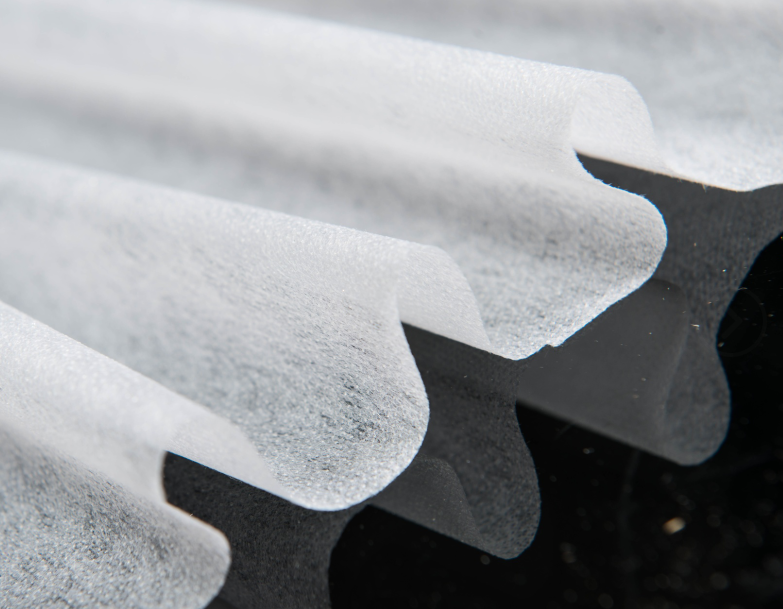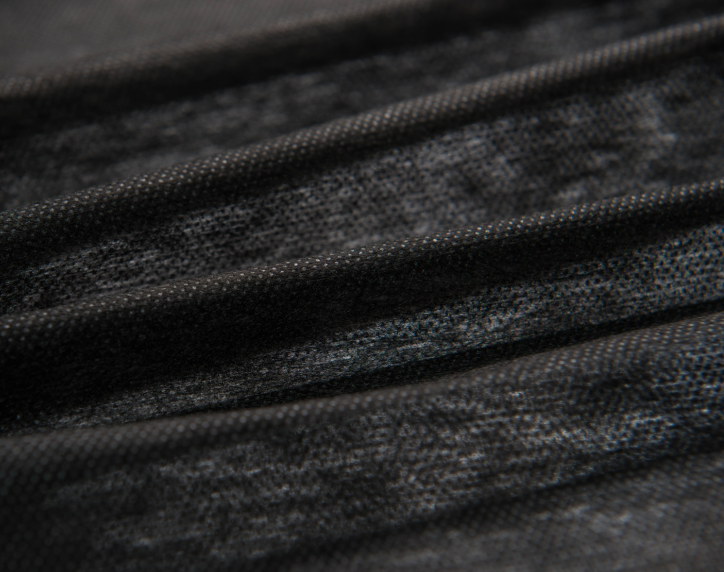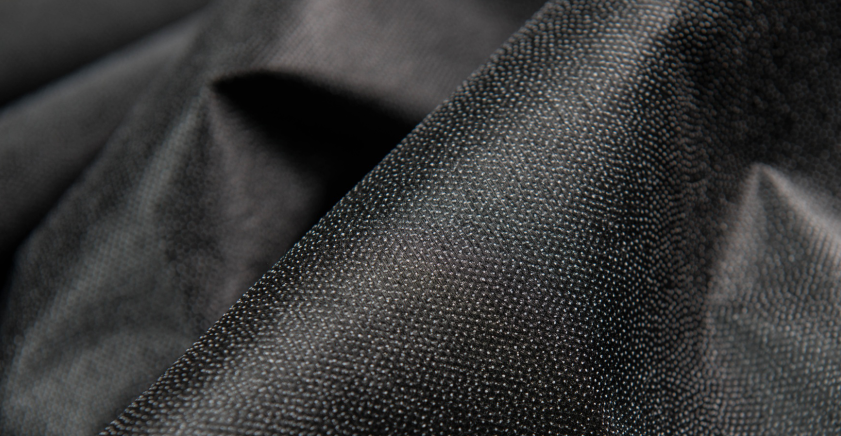What do you know about Non Woven Fusible Interfacing
2022-09-19.
Non-woven interfacing is a fabric that is formed without spinning and weaving, but simply by orienting or randomly bracing textile staple fibres or filaments to form a fibre network structure, which is then reinforced by mechanical, thermal or chemical means. It is not made up of a single yarn interwoven and knitted together, but the fibres are directly bonded together by physical means. The non-woven interfacing breaks through the traditional textile principle and is characterised by short process flow, fast production rates, high output, low cost, versatility and a wide range of raw material sources.
Properties of non-woven interfacings
Non-woven interfacing is a non-woven fabric, which is formed by directly using polymer slices, short fibres or filaments to form a web of fibres by airflow or machinery, then by hydroentanglement, needling, or hot rolling reinforcement, and finally by finishing. It is a new generation of environmentally friendly material, which is moisture-proof, breathable, flexible, lightweight, non-combustible, easily decomposed, non-toxic and non-irritating, colourful, inexpensive and recyclable.

Classification of non-woven interfacing
According to the process is divided into: hydroentanglement non-woven interfacing, thermal lamination non-woven interfacing, airflow into the network of non-woven interfacing, wet non-woven interfacing, spunbond non-woven interfacing, meltblown non-woven interfacing, needled non-woven interfacing, sewn non-woven interfacing.
Hydroentangled nonwoven interfacings are made by spraying a high-pressure micro-flow of water onto one or more layers of fibre webs, which entangle the fibres together to strengthen the web and give it a certain strength.
Thermally bonded non-woven interfacings are made by adding fibrous or powdered hot-melt bonding reinforcement to the fibre web, which is then heated and melted and cooled to form the fabric.
Air-flow nonwoven interfacing can also be called dust-free paper or dry paper nonwoven. It is the use of airflow forming technology to open the wood pulp fibre board into a single fibre state, and then use the airflow method to make the fibres agglomerate on the forming curtain, the fibre network and then reinforced into cloth.
Wet non-woven interfacing is placed in the aqueous medium of fibre materials into a single fibre, while making different fibre materials mixed, made of fibre suspension pulp, suspension pulp transported to the web-forming institutions, fibre in the wet state into the web and then reinforced into cloth.
Spunbond nonwoven interfacing is formed after the polymer has been extruded and stretched to form a continuous filament, the filament is laid into a web, which is then bonded by itself, thermally bonded, chemically bonded or mechanically reinforced to turn the web into a nonwoven fabric.
The process of meltblown nonwoven interfacing: polymer feeding - melt extrusion - fibre formation - fibre cooling - web formation - reinforcement into fabric.
Needle-punched nonwoven interfacings are a type of dry nonwoven. Needle-punched nonwovens use the puncturing action of a felting needle to reinforce the fluffy fibre web into a fabric.
Sewn nonwoven interfacings are a type of dry nonwoven fabric. The sewn method uses a warp-knitted coil structure to reinforce fibre webs, yarn layers, non-woven materials (e.g. plastic sheets, plastic foils, etc.) or a combination of them to make a nonwoven fabric.

Applications for non-woven interfacings
Non-woven interfacings for medical and hygienic use.
Surgical gowns, protective clothing, sterile wraps, masks, diapers, civil wipes, wiping cloths, wet face towels, magic towels, soft towel rolls, beauty products, sanitary napkins, sanitary pads and disposable sanitary cloths.
Non-woven interfacing fabrics for home decoration.
Wall coverings, tablecloths, bed sheets, bedspreads, etc.
Non-woven interfacing for garments.
Lining, bonded lining, wadding, shaping cotton, various synthetic leather backing, etc.
Non-woven interfacing for industrial use.
Filtration materials, insulation materials, cement packaging bags, geotextiles, coverings, etc.
Non-woven interfacing for agriculture.
Crop protection cloth, rice planting cloth, irrigation cloth, insulation curtain, etc.
Other non-woven interfacing fabrics.
Space wool, heat and sound insulation materials, oil-absorbing felt, cigarette filters, bagged tea bags, etc.

KIND‘s non-woven interfacings, a wide range, high quality, environmentally friendly and affordable.